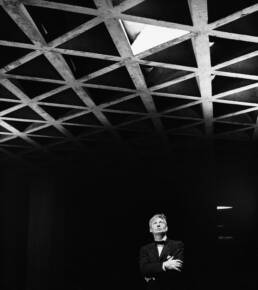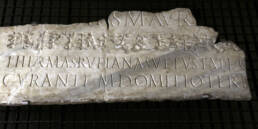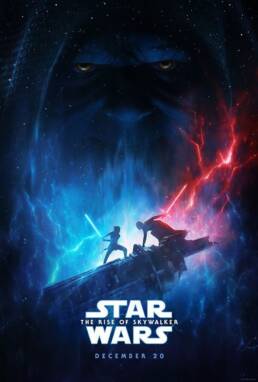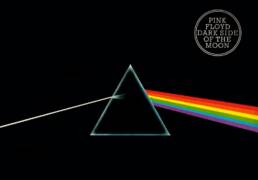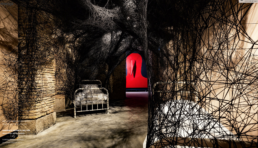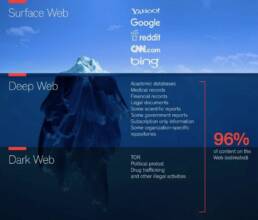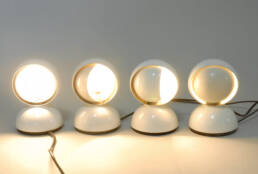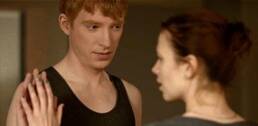«There is nothing darker than those torches that we need not to see in the midst of darkness, but to see the darkness.»
-Seneca, Letters to Lucilius, 64 AD.
Dark Side
Darkness is the field of the unknown or the reign of the possible, where the imagination is left free. Darkness creates fascination and fear, but above all, it questions us and determines the conditions for change. In representing what cannot be seen, in prefiguring what does not appear, people acknowledge a break in the balance that throws into a deep condition of suspension and uncertainty.
If, on the one hand, the darkness in the collective imagination takes on a negative meaning, since it is interpreted as a metaphor for the evil and the unconscious, on the other, it represents the necessary condition for the existence of what we consider "positive". It is one of those conditions in which the dichotomy provides the meaning of its elements.
In this scenario, we are looking to understand what factors and dynamics define darkness and its allegorical interpretation through the arts, sciences and history. The investigation into the dark, the obscure, will take place through tales instead of papers, because of the possibility to build a proper atmosphere.
Quinta Colonna, to continue its research on architecture and design, wants to go beyond the thresholds of the disciplines to explore the dark side of the world around us and the personality of those who live there. Dark Side is an experiment for an open narrative form that we are pleased to face together with the future authors selected through the present call.
Overview
Exploring the multiple possibilities within the dark-side-frame, we know that the most classic of situations see the dark and the bright sides paired and united in some way. Well … but it can't be an easy standing.
«Evil besides (which I must still believe to be the lethal side of man) had left on that body an imprint of deformity and decay. And yet when I looked upon that ugly idol in the glass, I was conscious of no repugnance, rather of a leap of welcome. This, too, was myself. It seemed natural and human. In my eyes, it bore a livelier image of the spirit, it seemed more express and single, than the imperfect and divided countenance I had been hitherto accustomed to call mine. And in so far I was doubtless right. I have observed that when I wore the semblance of Edward Hyde, none could come near to me at first without a visible misgiving of the flesh. This, as I take it, was because all human beings, as we meet them, are commingled out of good and evil: and Edward Hyde, alone in the ranks of mankind, was pure evil» (Stevenson, 1886).
Mister Hyde, who advances like a shadow over Dr. Jekyll's conscience to overwhelm him and completely obscure him, is the dark side. The metaphor is clear and reminds of all the demons who live alongside us. They can condition our life to the point of breeding a transformation, temporary or not. They can be very common issues like the inner conflict, the relationship with money, the passage of time, death, greed, mental alienation and madness … the dark sides of the human soul with which we live together.
Out of our consciousness, mankind has always faced the dark surroundings. Starting, for example, from the Platonic myth of the cave, this theme has shaped our cultural frame and the world around us, both ideal and built. It is the passage from darkness to light that is the metaphor of change and growth that affect men. First, there is shadow and darkness, then the freedom that comes with the exit, by reaching full awareness of reality. In fact, it is reality, and not dream, the true opposite of darkness. It can be a cheerful ending, but not always. Finally, darkness could also be re-evaluated.
The world today, however, is more complex than what the man who frees himself from Plato's chains discovers. It seems that after all, the darkness has come out of the cave. Misdeeds, madness and death pervade the everyday life passing through media and social media. Thus all this reaches the global society and ultimately, the human soul.
The scenario … By 2065, there will be more dead-people accounts than alive profile on Facebook. As we live more and more in the virtual domain – we spend half of the time awake online and on social networks – a virtual darkness is to be expected.
How tied are we to our accounts? They are our projection of the digital world. Even if they are something different from us, we are inextricably linked to them, like shadows that are projected from our feet.
«Then Wendy saw the shadow on the floor, looking so draggled, and she was frightfully sorry for Peter. "How awful!" she said, but she could not help smiling when she saw that he had been trying to stick it on with soap. How exactly like a boy!
Fortunately, she knew at once what to do.
"It must be sewn on," she said, just a little patronisingly.
"What's sewn?" he asked.
"You're dreadfully ignorant."
"No, I'm not."» (Barrie, 1911)
Unlike Peter Pan, we often try to stave off our shadows as much as possible. When we use filters to remove our imperfections … or whenever we hide our fears behind false truths in respect to a society that enhances standardization and discriminates against the different. We all try to mask our shadows.
Shadows are signs that mark and distinguish. Shadows emerge from the interactions between subjects who have precise roles, distinct between who or what generates the shadow and then what it is projected on. Among men. Involving buildings and cities. Signs and margins of the dark side.
It can also be a large-scale play. During an eclipse, the dark side grows when a celestial body comes to obscure another aster, intervening between us. A dark veil falls over everything, but momentary.
However, the eclipses that happen inside us are different. They bring out the darker aspects of our personality, of our soul. They are not such fleeting eclipses, but they risk persisting and deeply affect us.
Keywords
#shadows #lights #eclipse #projection #conceal #dark
Mission
The next issue of Quinta Colonna starts from this frame and much further. Most of all, "Dark side" is a non-linear narrative experiment. Possible authors are invited to contribute to the building of a four-dimensional story. Their task will be to enrich the story with multiple narrative developments resulting from their point of view. The goal is to build an experience – not a story – where fiction, art, design, architecture, illustration, music and other disciplines coexist in a unique and dynamic product.
It all begins with a story written by us – inspired from the celebrated "Excercices de style" of R. Queneau – which is concluded, but open in many points that correspond to words or symbols. Each contribution proposal must concern only one of these points, but an author can propose several contributions and therefore follow more than one idea.
The story can be deepened and explored by building those parts of it apparently hidden, making them explorable and alive. They will enrich the plot by changing, why not, the sense of the story. The drawing of a painting that the protagonist observes, the plan of the city in which the incident is set, the spin-off of the story of a passer-by, the music that the protagonist listens to. Each contribution of the authors will cooperate in making the reading experience as immersive and rich as possible.
Tale
What time is it?
The 6 o’clock eclipse. I hoped it was already 9 o’clock one. I look out, and nothing, as
per always, like every damn day: the neighbour goes out for the eclipse shift, his nexdoor
neighbour greets him with her right hand because with the left one she is booking her
return car to work, but she will wait as always because it is always the rush hour, she still
hasn’t understood it.
♪♪♪♪♪ my favorite song echoes to wake me up. “STOP MUSIC”.
I keep thinking about the neighbour, she still hasn’t got it, she knows very well that at
the rush hour between the sun and the eclipse the city is a mess. “LONG COFFEE” she
knows very well that when the road viability changes roads are flooded like a mailbox
after the holidays! Why doesn’t she get it, though??? She’s stupid, there is no other
explanation.
Shower. Teeth brushing. VR lens.
Fuck !!! It doesn’t work, again!!
I get dressed. “WHITE SHIRT THE SHORT ONE”
I look myself in the mirror. I don’t like it. “SHIRT BUT THE OTHER ONE, THE
LONGER ONE”. However, I hate this painting, and I hate whoever bought it for me.
I go out otherwise I lose my seat. “TODAY I WANT PIZZA, THE TWO, THE THREE
INSTEAD”.
Anyway, the neighbour is still there, “Hello there, are you still waiting?”. How stupid.
Hot wind. Dust.
Supertree Grove, I turn right.
Dust. Hot wind.
I hate this city, if so you can call it. And I hate the eclipse. And I hate this city with the
eclipse, and I hate its continuous mutation, it seems like it wants us to get lost, confuse
us. I hate to never know how the road will change. I hate to never remembering that the
the building that changes is not the one on 35th but the one on 36th, and I fucking get lost
every time.
“RESERVATION NUMBER THREE SIX THREE NINE THREE TWO”. I wait.
What an ugly long neck he has. 7 notifications. Mute chat.
It finally arrives. I push, I get on, I push, I sit down, they push me, it’s the stupid man
with the long neck. I look out to decide if I hate what I see beyond the glass more or what
I see behind. I hear screaming. “$5&%/(ò%@”. Ah, the one with the long neck, of course.
He won then, I hate him.
I get down. I take the usual at the usual place and set off.
Tour Eiffel, straight ahead.
I enter into Facebook, I’m really pissed off. Tail. “Keep a safe distance”.
It’s my turn. The salesman with his blue polo shirt and the white F stitched on the
heart side welcomes me with a forced smile. His hands are shaking and he is constantly
staring at a distant point of the shop. “$5&%/(ò%@”.
I go out with my new VR lens.
Saline solution. I wear it. ? “I’m loading ...”
I set off again.
?️ “G is calling you”. Refuse.
I stop to stare the shop window on 53rd Street to decide whether to buy ... “SKIP THE
AD”. The cereal bee was dancing in front of me. Christ I have to get the Premium update!
?️ “Eclipse map update”.
Stop. Traffic light. Crowd, heat, silence, waiting. “SKIP THE AD”. I broke the silence.
The girl in front of me turns around. She smells like honey. I smile at her. She turns
back. ?️ “Magda T. Add to contacts”
Kurfürstendamm. We are almost there.
♪♪♪♪♪
And then I see him, that fool with the long neck. Again.
He stops me. He stares at me.
“You have a missing button”
“$5&%/(ò%@”
Blade, blood.
I hate this city.
Guidelines
Dark Side is set in the dark dystopian future of a city made up of other cities where the night no longer exists and the inhabitants live in an almost constant eclipse, which constantly changes the city. Everything is dark, the setting, its characters, its plot and everything must remain so.
We ask the authors to bring to light what is obscured in the story. The story can in fact be deepened and explored by building those parts of it apparently hidden, making them explorable. The contributions of the authors will enrich the plot and, why not, maybe they will change the meaning of the story. The drawing of a painting that the protagonist observes, the plan of the city in which the event is set, the spin-off of the story of a passer-by. Each contribution of the authors will cooperate in making the reading experience as immersive and rich as possible.
Purely indicative examples:
■ What would happen if the protagonist was unable to climb? Possible moments in the plot where the author can intervene by changing the continuity of the story
■ What is the protagonist listening to? audio that the author can process - (max 1 per author)
■ What is represented on the painting? processing of a visual content - static image or video - (max 1 per author)
■ Who is the person the protagonist meets? What was he doing before he was there? drafting of a part of the story dedicated to the biography of a character or his personal part of the day.
■ What did the characters say to each other? drafting of the dialogue or visual / audio representation - static image (e.g. comic) or video - (max 1 per author)
■ What does the protagonist see? visual elaboration (iamge, draft, photo) of a video contribution - (max 1 per author)
Other possible supports for contributions are found in the text in italics as a mere suggestion but the authors are free to contribute in any way and manner to the Call.
“This here is a lamp like thieves of thieves, blind lanterns there are. (...) looking at a thing that was never used to read at night, but to steal, like the lamp of the thieves, that blind lantern, has become another lamp that was the 'eclipse' in short." (Vigo Magistretti, L’Age d’or del Design Italiano, puntata n.11) Eclisse Lamp, photo by D68 design+art
In “Be Right Back” Martha “lives again” her dead boyfriend through a robot that talks, thinks and answers like him. All this is based from a true story. The Replika app born from an algorithm written to simulate conversations with a friend of the developers who died in a tragic accident. Black Mirror, ep.1, Season 2.
Deadline
Submissions – deadline October 24, 2020 postponed October 31!
Email to submissions@quintacolonna.eu
Specific information about the submission on link below
